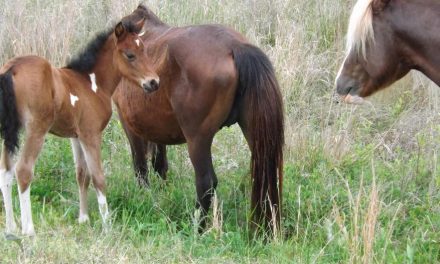May 2001
Ag Land Preservation? Open Space Conservation? Environmental Easements? Historic Trusts?
What The Heck Are All These Programs?
In general, preservation and conservation programs are solutions to land planning problems created by a dynamic and growing population.
In areas of the country that are not struggling with burgeoning population issues and development pressure, you will not find too many of these programs.
In Maryland however, these issues and pressures are daily concerns, as our tiny state is wrapped around two major metropolises (Baltimore and Washington, D.C.), which are part of a chain of cities strung up and down the east coast, all of which are getting larger and creeping closer together.
Preservation programs tend to be created after something has already become a problem. In Maryland’s case, community leaders began to realize that we were in danger of paving over all of our open lands if we didn’t do something about it, perhaps developing all the available land might not be such a hot idea. At stake were (and still are) a variety of issues, not the least of which was quality of life in the state, maintaining habitats, convenient food sources and a practical tax base mix of rural with other uses.
In many cases throughout the state, master plans were already set, and community leaders realized that landowners faced tremendous economic pressures to develop. So the solution was to create “after-the-fact” programs for landowners that would provide them with alternatives to development, specifically economic incentives to continue farming.
So preservation programs are rather like tire patches, something added later to help fix a new problem.
There are two main types of programs: public (which are funded by tax dollars) and private (which are funded by donations and grants).
Aside from the agricultural value of land, land is generally considered to have two economically desirable attributes: easements and development rights.
There are two tools available to entice landowners into the program: cash or tax credits in exchange for easements or development rights.
There are generally one of three themes to the programs: agricultural, environmental, or historical. These themes provide the motivational force to the program. For instance, a historical trust would concentrate their limited resources on preserving small or large parcels that are deemed to have historical value. An environmental program may or may not be interested in farmland; an agricultural program may nor may not be interested in uncultivated land or in small parcels.
Maryland State Programs
With the foundation of the Maryland Agricultural Land Preservation Foundation 20 years ago, Maryland was the first state to fund preservation of farmland, and, until very recently, Maryland, the eighth smallest state in the continental U.S., had 44,000 acres in ag preservation, more than any other state. We were only recently overtaken in acreage by Pennsylvania, and dollars by New Jersey, which has set aside $1 billion for ag preservation over the next 25 years. About 10 years ago these states adopted many of our programs, improving upon them in the process.
Governor Glendening has since jumped on the band wagon, with the “Smart Growth” initiative which includes improved land planning and revitalization of urban and existing suburban areas, as well as a variety of preservation programs. For a copy of the booklet outlining all the Smart Growth initiatives, contact the Maryland Department of Planning at 410-767-4500, or check their website: www.mdp.state.md.us/smartgrowth.
You can also request from MDOP a Farm Land Preservation Atlas which features the relationship between and implications of land use, zoning, development pressure, easements, and conservation zones.
Some of the state programs own the land outright (which they acquire either through purchases or donations), but most programs encourage maintaining private ownership. Many of the state programs filter money to the local level through counties.
- Rural Legacy Program: A program of the Maryland Department of Natural Resources 410-260-8403; gdehart@dnr.state.md.us
- Maryland Agricultural Land Preservation Foundation: 410-841-5860; Scheidpw@mda.state.md.us
- Maryland Environmental Trust: 410-514-7900; jhighsaw@dnr.state.md.us
- Maryland Historical Trust: Maryland Department of Housing and Community Development: 410-514-7629; Day@dhcd.state.md.us
- Program Open Space: 410-260-8403; gdehart@dnr.state.md.us
- Forest Conservation Program: mhoneczy@dnr.state.md.us
Contact your county planning office for your local programs. Some county programs may not use any state funds. For instance in Howard County, the dollars per acre being offered via the state programs were not nearly enough to be attractive to landowners, so Howard County established their own program, paying sometimes 300% more than the state would have offered.
Many Maryland counties offer creative combinations of transfers of development rights as well as outright purchases.
Many landowners may use a combination of agricultural, environmental or historical programs, both public and private, to preserve their land for future generations.
However, not all farmers will want to put their land into preservation. No matter how many ways they could combine programs, preservation may not be the most economically advantageous solution for them. And it is their land. They don’t owe anyone a pretty view or a place to ride.
For more information, contact these national programs:
- American Farmland Trust, Mid-Atlantic Office 410-461-4534
- Land Trust Alliance: 202-638-4725; www.lta.org
- Nature Conservancy: 800-628-6860; nature.org
- Trust for Public Land: 415-495-4014; www.tpl.org
- Equestrian Land Conservation Resource: 815-776-0150; www.alcr.org











